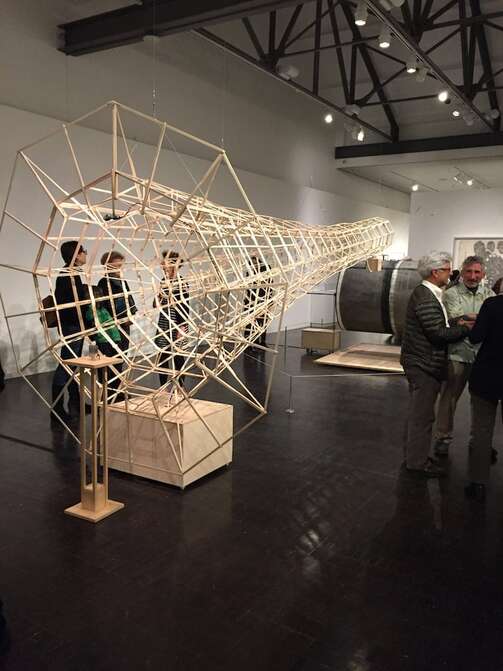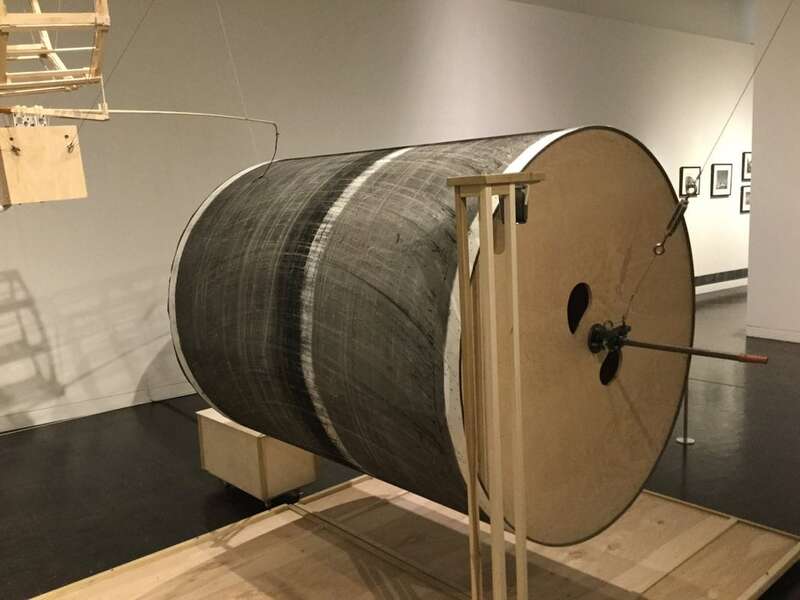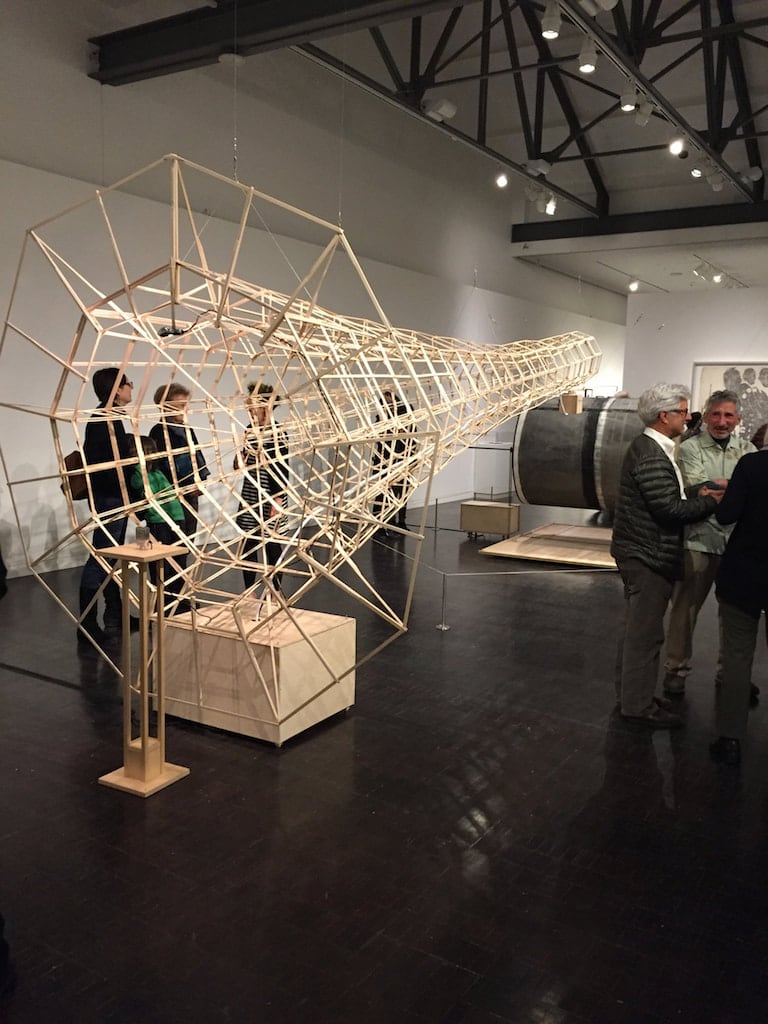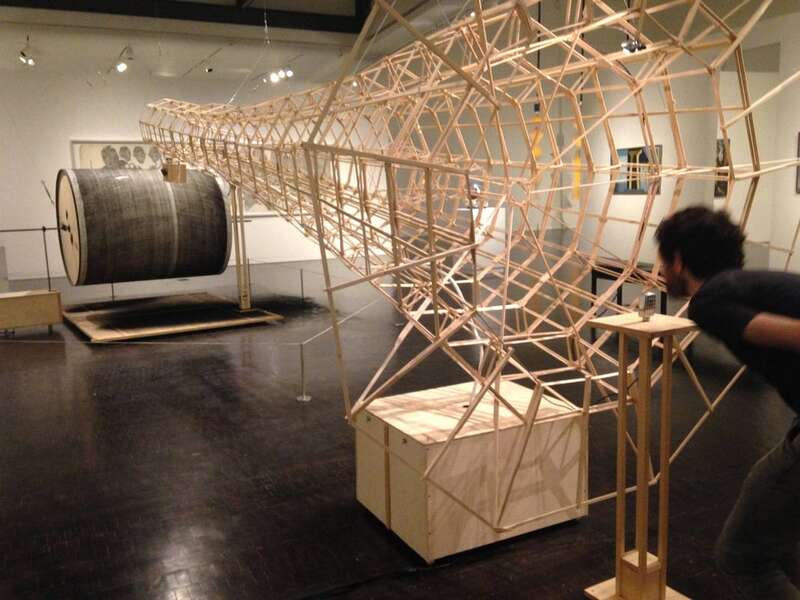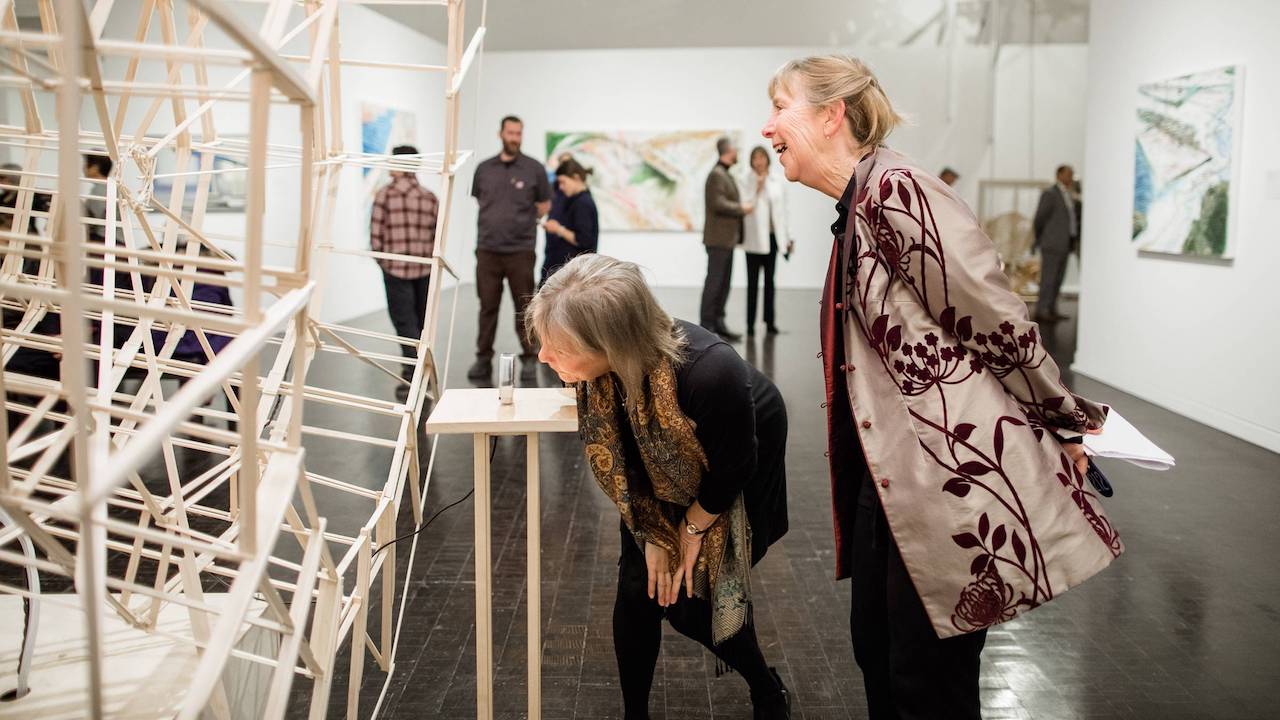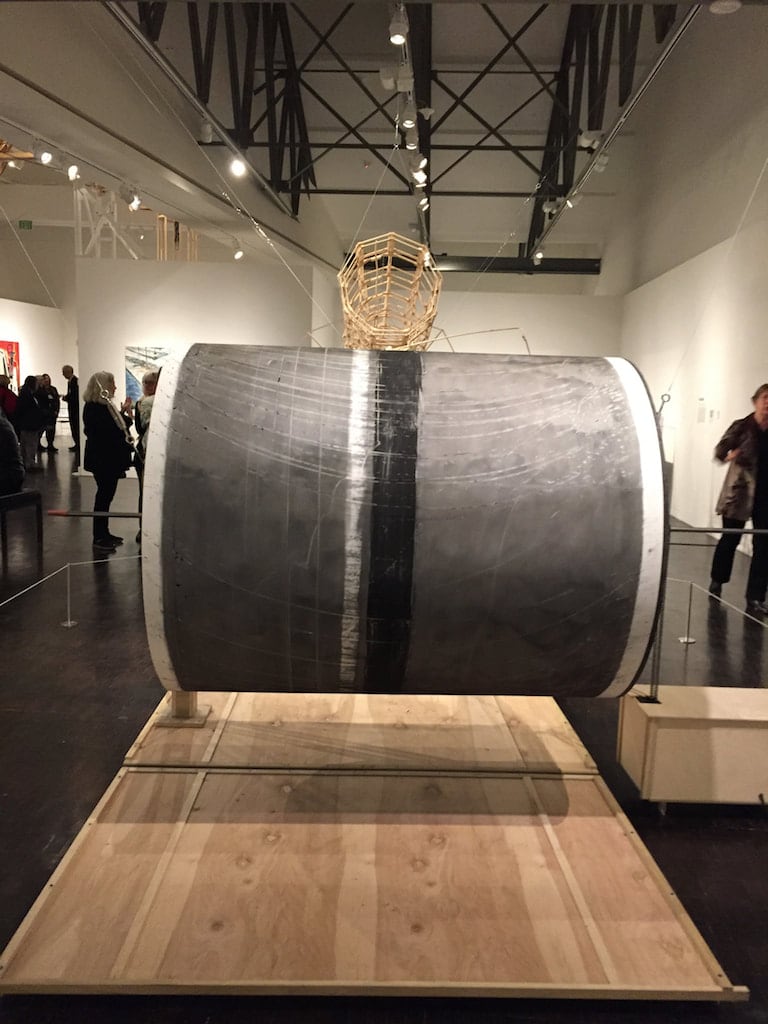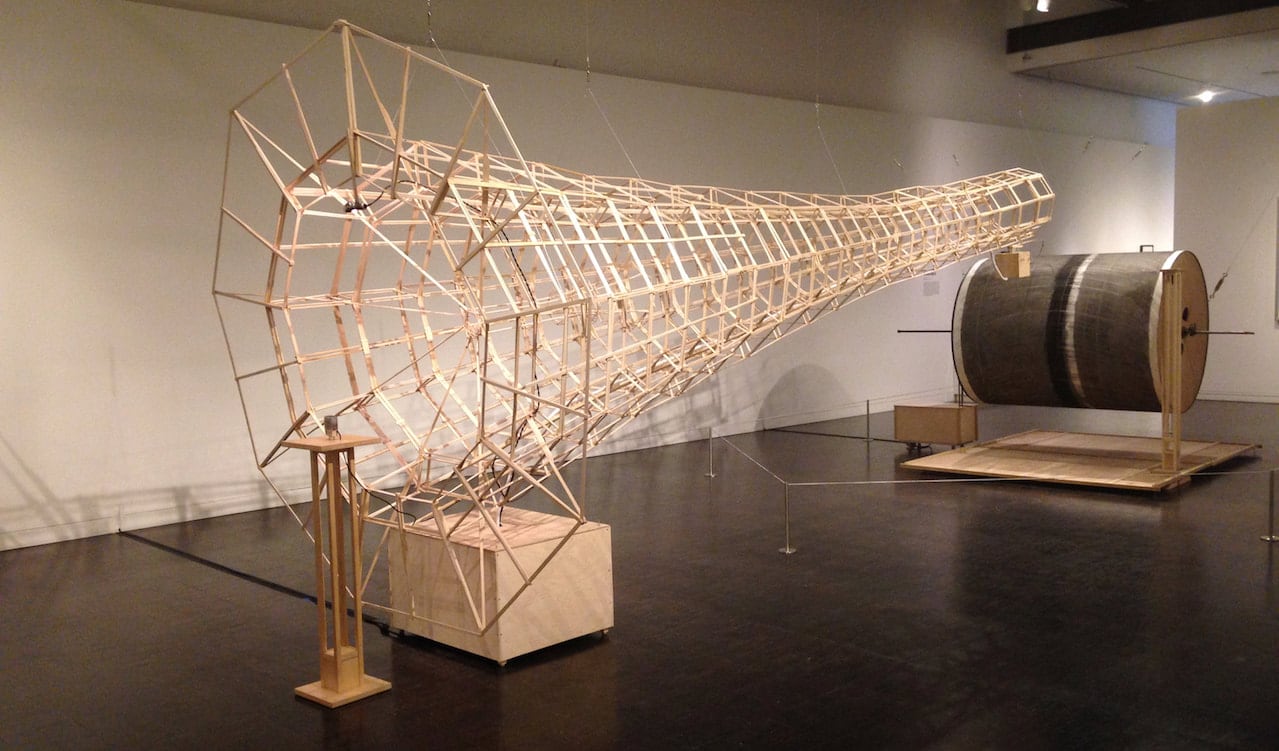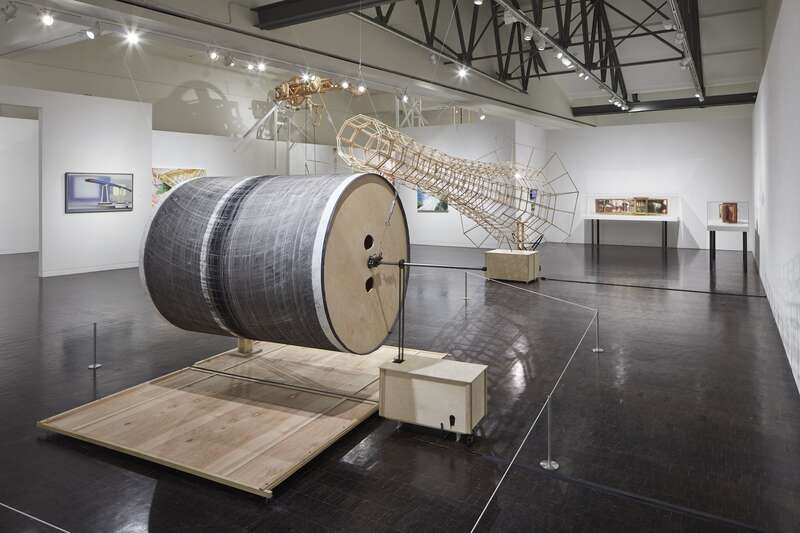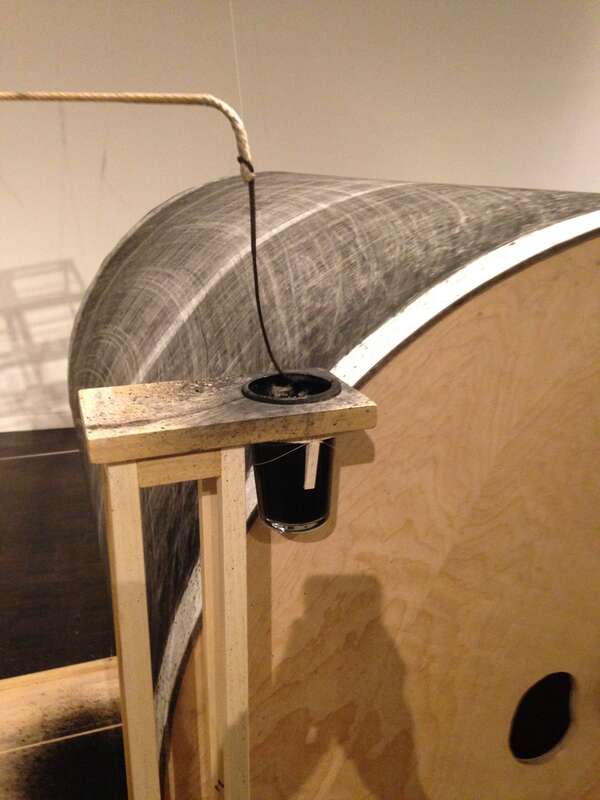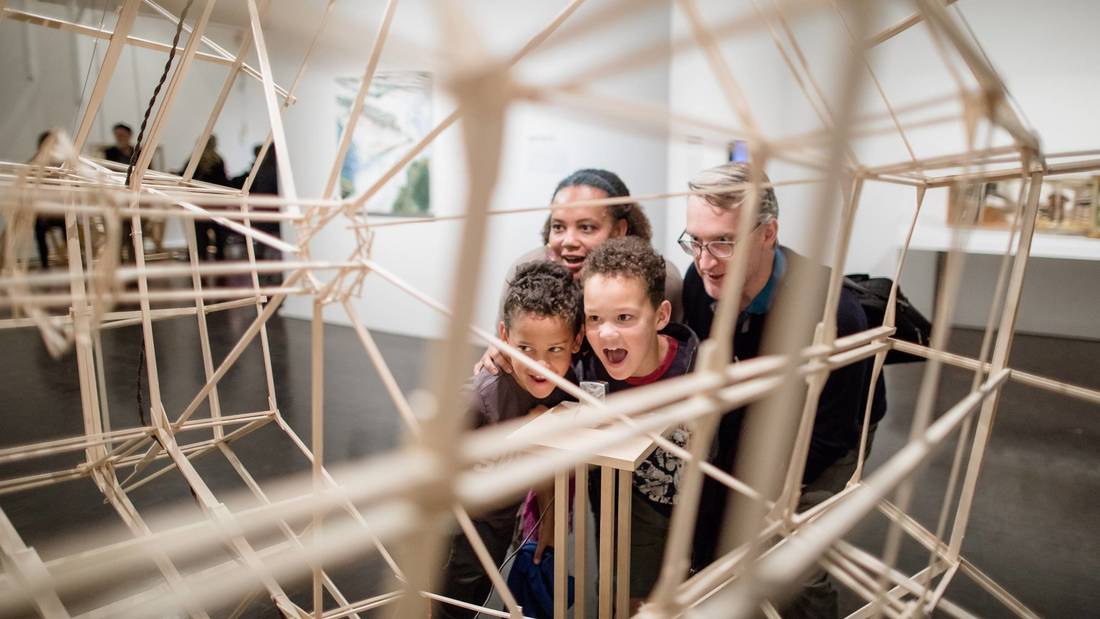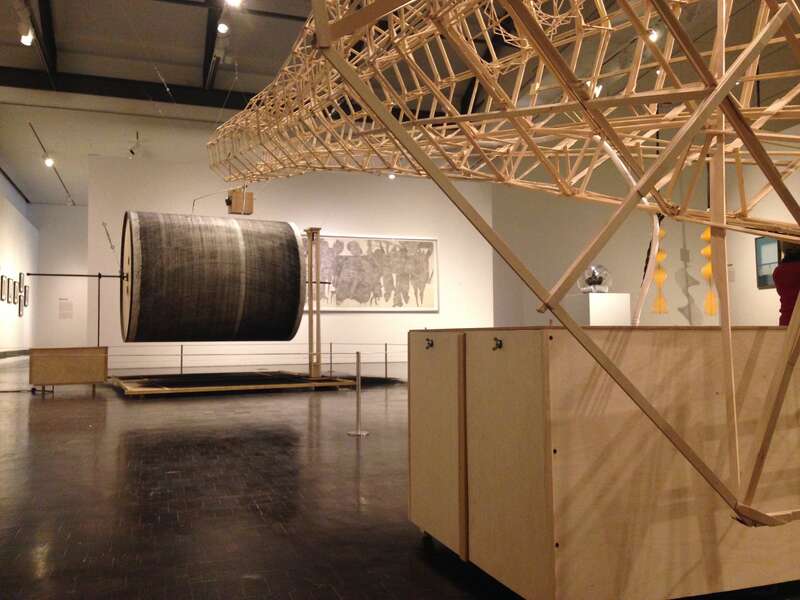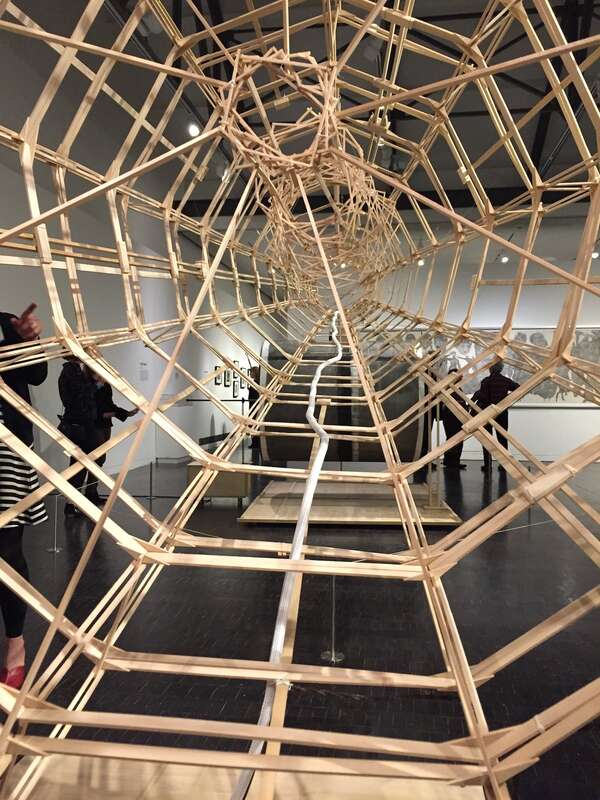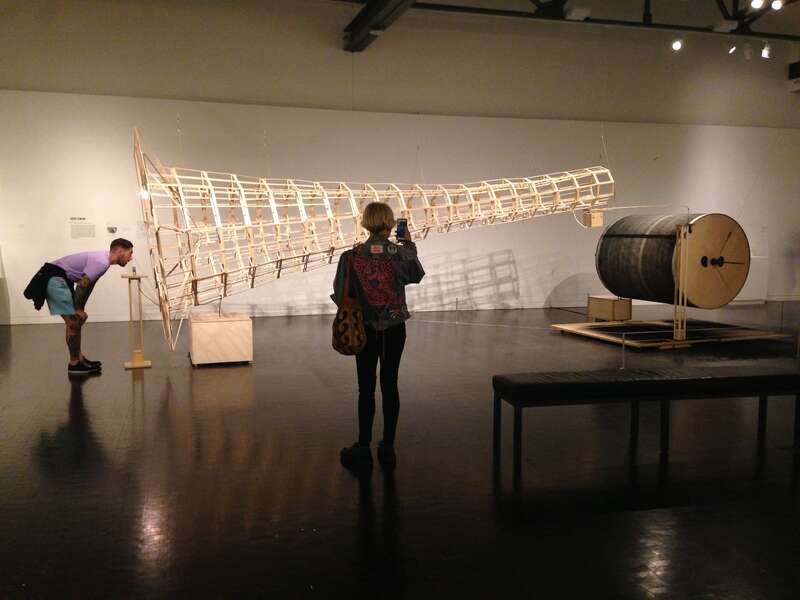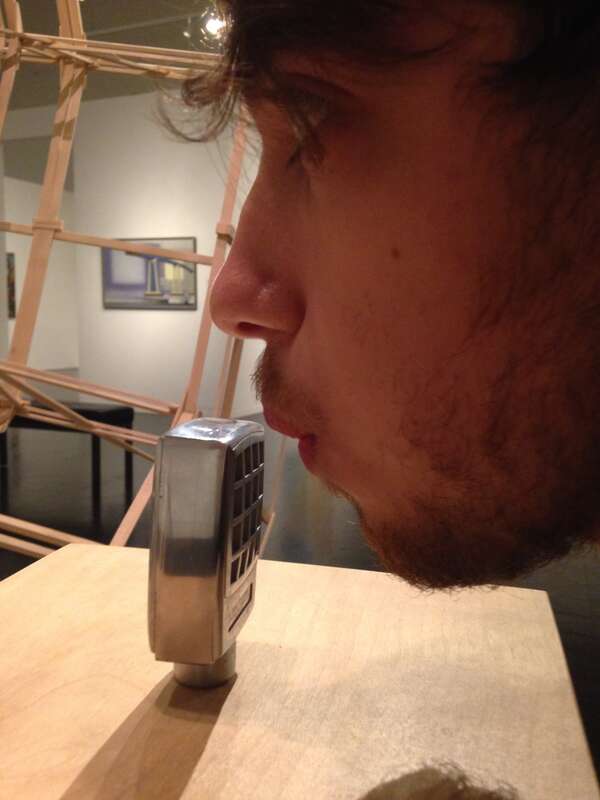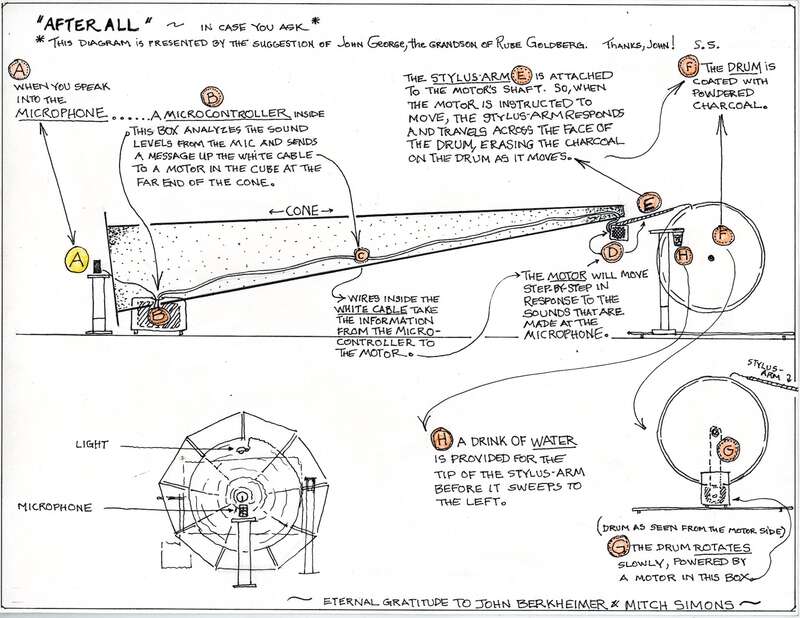After AllContraption: Rediscovering California Jewish Artists
Contemporary Jewish Museum San Francisco, California Curators: Renny Pritikin and Mark Johnson 2018
Materials and Dimensions
Wood, carbon, motor, electronics 10'H x 21'L x 9'W Description
After All is a wooden, robotic interpretation of the Phonautograph, a 19th century apparatus created by the Frenchman, Édouard-Léon Scott de Martinville. His invention predated Edison’s phonograph by 17 years and promised a new kind of visual literacy for those who could learn to read, translate, and recite its mechanically created marks. The air pressure from a voice speaking into a cone pushed and deformed the surface of a sensitive diaphragm to which a boar’s bristle was attached. Inflection in the voice moved the diaphragm and the bristle touched a revolving soot-covered wheel, scratching marks in response to air pressure changes. The marks could be ‘read back’ by those literate in a sound-to-writing technique. After All invites the audience to speak into an oversized cone but it interprets the marks by transducing the voice through a micro-controller which instructs a motor to drag an arm across a charcoal coated drum. As it moves in response to voice, it both writes and eventually erases all the writing from the wheel. Under the wheel, charcoal dust attests to the fallen words that did not adhere. The length of the cone is exaggerated in order to stress the aspect of speaking to a distant (meant as an adjective and a noun) “listener” who may or may not be interpreting one’s messages accurately. The cone is long and the arm that is recording the voice’s impulses is out of the speaker's line of sight. Therefore, it really takes two people to observe the effects of speaking into this piece. One speaks while the other observes the writing on the drum, compounding the slippage between intention and reception. A single user goes on faith that what is said is what is written. When the arm has moved to its extreme position to the right of the drum, it occasionally dips into a glass of water that's placed on a tiny table within its reach. The feathery tip of the arm is wetted and the next voice-induced movement swooshes the arm quickly all the way to the left, like the action of the carriage-return on a manual typewriter. When this happens, the mark is more like a brush that REMOVES the charcoal as it makes its next pass across the drum. |
Videos
|
|
|
